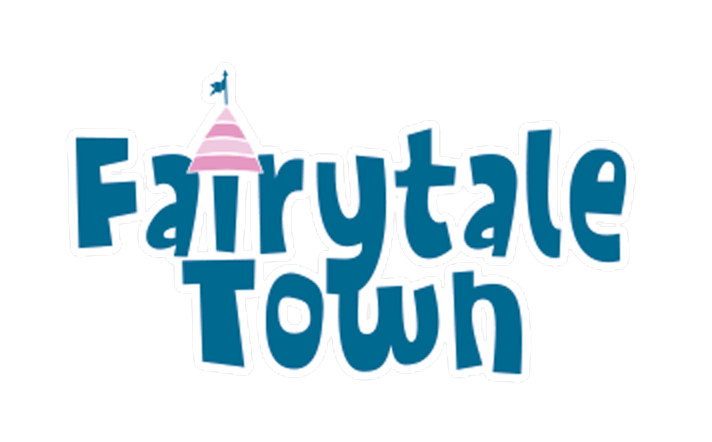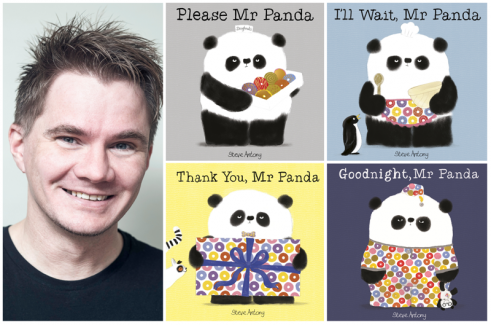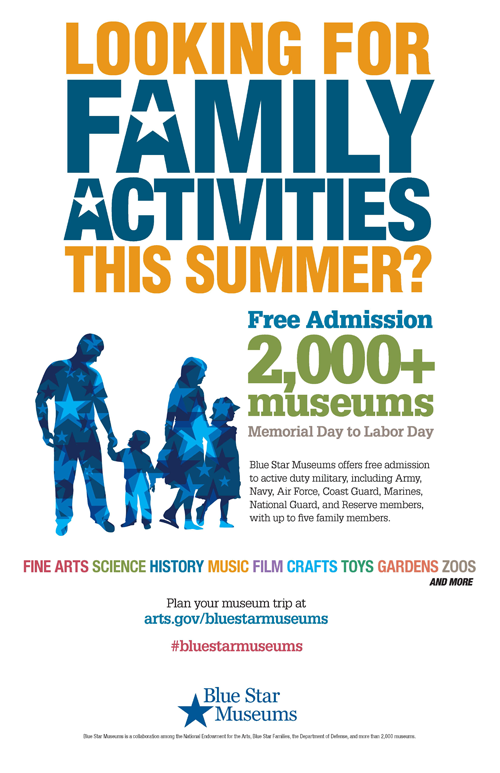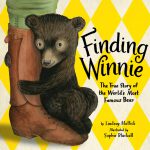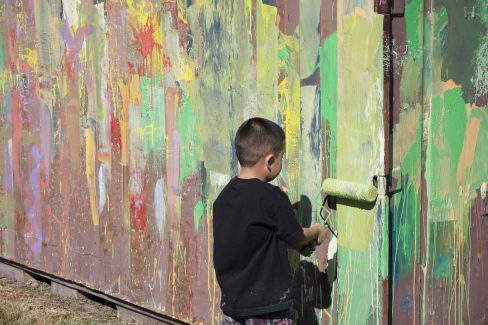Executive Director Kathy Fleming to Step Down
Fleming will transition to director emeritus position in 2020 to focus on capital campaign and special projects
New search underway for park’s next leader
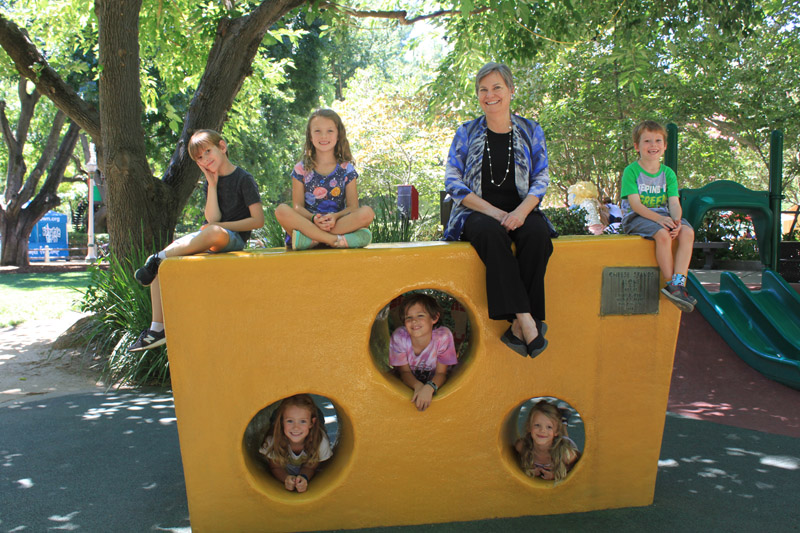
Fairytale Town’s executive director, Kathy Fleming, will step down at the end of 2019 and transition to a director emeritus position in 2020. She has been the executive director of Sacramento’s storybook park since 2000. The Board of Directors has launched a search for the next executive director.
As director emeritus, Fleming will work with the incoming executive director to ensure a smooth transition of leadership for the nearly 60-year-old institution. Her time will then be focused on Fairytale Town’s capital campaign to support the park’s half-acre expansion as well as program development for the Story Center, one of the features of the expansion. Fleming will serve as director emeritus from January through December 2020.
“The park’s success is Kathy’s success, and her support during this critical phase of our growth exemplifies her dedication to Fairytale Town and it’s expansion. It is the Board’s intention to honor her legacy during this transition period,” said Linda Alger, president of Fairytale Town’s board of directors. “We are extremely grateful to Kathy for her leadership of Fairytale Town for the last 19 years. Thanks to her vision and commitment, Fairytale Town is a thriving community asset that welcomes more children and families than ever before into this magical oasis. The next leader will come on board during an exciting time for the organization and our community.”
“Serving as director of Fairytale Town has been a great joy and the highlight of my professional career. I want to thank the board, staff and volunteers who work hard every day to make Fairytale Town the magical place it is,” said Fleming. “As I transition to director emeritus, I’ll turn over the day-to-day operations and focus on projects that will advance the organization and promote the importance of play for the healthy development of children, families and communities.”
During her tenure, Fleming has transformed the landmark facility from a small children’s park to one of the top five attractions in the region. She has led the organization through dramatic growth with involvement from 16 board members, 30 staff members, more than 600 volunteers, and many community partners.
Some of Fleming’s achievements include:
- increasing annual attendance from 160,000 to 250,000 guests;
- growing the operating budget from $650,000 to $2 million;
- building strong partnerships with the City of Sacramento, Sacramento Public Library, and other community organizations;
- creating new signature programs, including the annual Children’s Book Festival and Winter Wonderland;
- improving the nearly 60-year-old facility with numerous capital projects, including the Mother Goose Stage, Sherwood Forest, and the Yellow Brick Road, as well as infrastructure projects such as walkways and fencing;
- opening the first playset based on a story from the African continent, Anansi’s Web;
- and, establishing outreach programs, such as the Sacramento Adventure Playground, a free after-school youth development program for ages 6 to 15.
Located in William Land Park in Sacramento, Calif., Fairytale Town opened to the public on August 29, 1959, when it was dedicated as a gift to the children of the Central Valley by the City of Sacramento, the Junior League of Sacramento and other community and business leaders. Fairytale Town remains the only literacy-based park that serves children in this region. The park received the Business Hall of Fame award at the Sacramento Metro Chamber’s Annual Dinner in February 2019 and the Regional Treasure award from the California Parks and Recreation Society’s Hall of Honor in March 2019.
Meet the Voice of Fairytale Town
In celebration of 60 years of Fairytale Town, we’re bringing you stories and profiles from throughout our history.
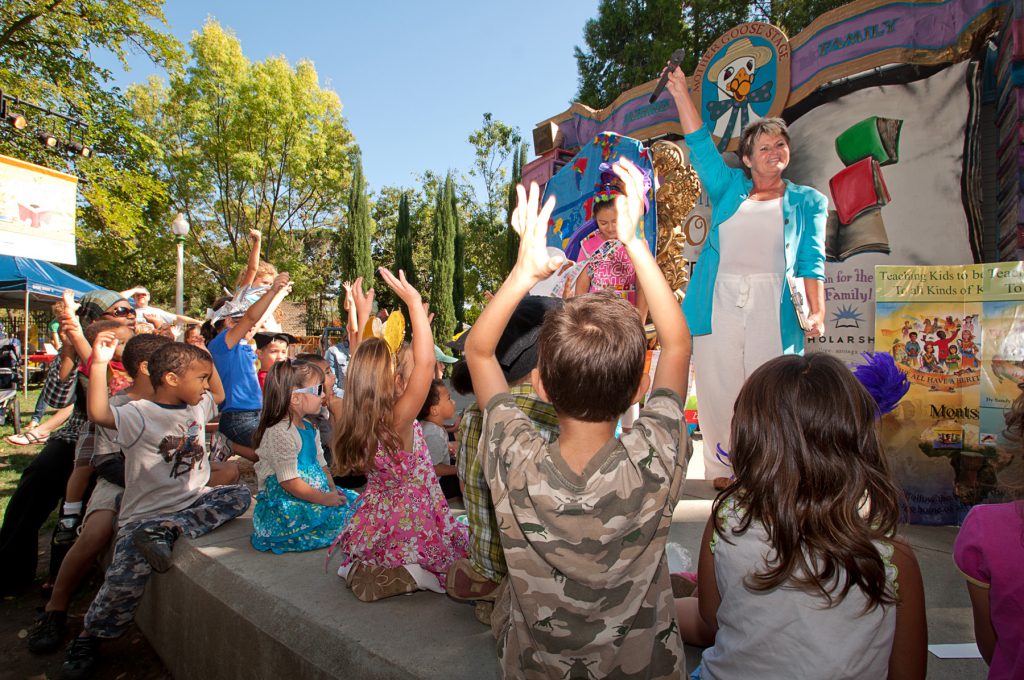
After her daughters were born, Francie Dillon realized a conventional office job was not her calling, and instead decided to pursue a career in educating children through music and storytelling. During her journey, she found herself with the opportunity to help Fairytale Town create songs and stories for our Magic Storyboxes. With Francie’s story telling voice and lively children’s music being heard around the whole park for everyone to enjoy, she earned herself the title of “The Voice of Fairytale Town”.
What sparked your interest in writing music and performing for children?
The interest to write music and perform for young children was born from a beautiful cluster of circumstances that now seem magical and at the same time, almost comical. I could not have seen this career path coming, and yet, I can’t imagine what life would have been without it.
At the time of my first daughter’s birth, I had been working with a Los Angeles based advertisement agency. I remember telling Kenzie when she was less than 24hours old, “Dad’s not going to like this, but I can’t go back to that job!” At that moment my world changed. Somehow, I was going to find a way to be the mom I needed to be and still earn an income.
Almost two years after the birth of my second daughter, Lindsey, I started my business Jazzbabies, teaching music appreciation in preschool settings. With a background in music and marketing, I started writing little kid’s songs that I thought would be fun to record. Also, around that time, one of my Jazzbabies parents asked what I would charge to perform at the Arden Fair Kids Club. I had no idea those kinds of jobs were out there, so the best answer I could muster up at the time was, “It depends on the details of the job.” Shortly after that, I started performing as a street artist at the Downtown Thursday Night Market. The combination of all these elements led to me to create The Toy Box CD, with my award-winning musician/producer brother, Christopher Hedge. That CD, along with performances at Fairytale Town and the many other moments of opportunities that presented themselves, launched my career as a children’s performing artist.
How did you first get involved at Fairytale Town? Tell us about your experience.
I was first involved with Fairytale Town as a parent with two very young children. It was the place to go and breathe while our kids could safely explore and play! But as an entertainer, I’ll never forget my first time performing in the Children’s Theater. I don’t recall who extended the invitation, but I remember having a 30-minute set to sing some songs and tell a few stories. I had no real direct experience with this kind of performance, but I was excited!
Thinking back on that first performance, I remember blowing through the songs and stories in 15 minutes. I was so nervous! The audience was so sweet, the applause kind, and all I knew when I left was that I wanted to do more of that! And since that first performance, I have been able to build a performance career that landed me the professional title I’m most proud of, “The Voice of Fairytale Town.”
What is your favorite Fairytale Town Memory?
My most favorite memory of Fairytale Town was being able to spend an evening with my daughters in the park after hours as I tried to find a voice for each of the playsets. I was given the task of writing all the songs and stories for the Magic Storyboxes, and I wanted to make sure that I captured the essence of each of the many characters. As I sat in front of Mother Goose, asking what she might want to say to the thousands of children that would be sliding down her apron, all I could hear were the girls screaming and laughing as they blasted through the park. The freedom to be in the park with the girls after hours was terrific, and I found myself filled with every kind of emotion. Creating the stories and songs for the many playsets that would challenge the imagination of thousands of children and create memories for so many families was a privilege and honor. That evening, the girls and I measured the Crooked Mile, crawled through the Cheese, slew dragons in Sherwood Forest, and— little by little— found a voice for the playsets.
Meet the Puppeteer
In celebration of 60 years of Fairytale Town, we’re bringing you stories and profiles from throughout our history.
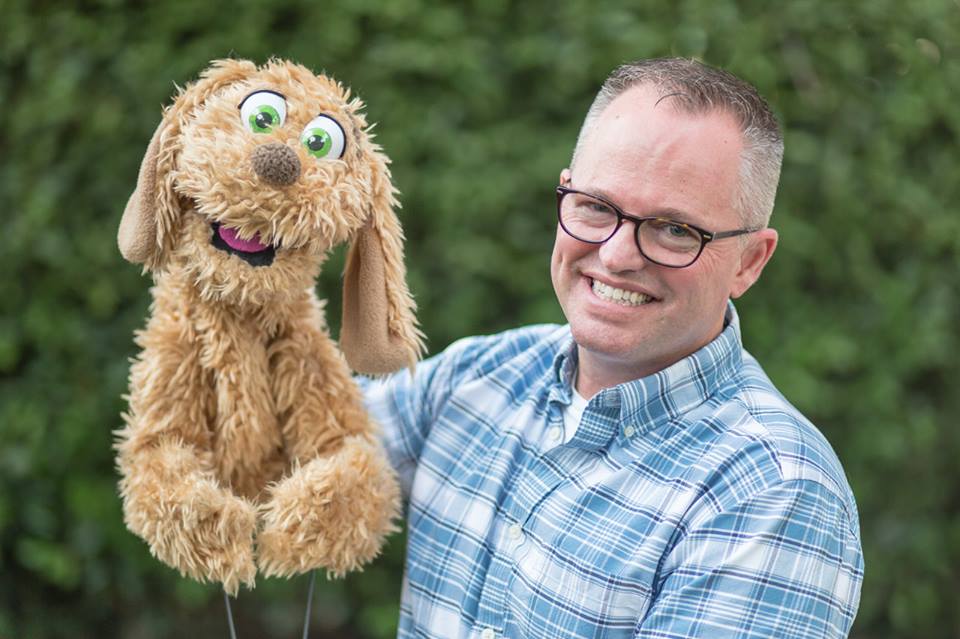
Art Grueneberger’s face may not be familiar to Fairytale Town families, but his voice may be. Art has been one of the puppeteers behind the shows in the Children’s Theater for the last 23 years. Since 1996, Art’s company, Puppet Art Theater Co., has been making children—and their parents—
giggle with his puppet shows that present classic tales with a wacky spin. In addition to producing and performing puppet shows for children, he has directed productions for adults that have been seen staged in New York City and San Francisco. In 2007, Art directed an acclaimed production of Man of La Mancha featuring life-sized puppets at UC Davis.
What sparked your interest in puppetry?
My first puppets were children’s toys that I received when I was five years old—a Cookie Monster and Ernie and Bert moving mouth puppets. I loved the puppet characters on Sesame Street and playing with those kid-sized puppets provided hours and hours of enjoyment. Just as I was growing out of Sesame Street, The Muppet Show began airing. The corny writing of Jerry Juhl, combined with some of the best television puppeteers, were right up my ten-year-old sense of humor. I performed countless puppet shows for my mom from behind the couch with my increasing collection of hand puppets.
Fast-forward to my last year of college when I decided to take a Puppetry Class thinking that it would be an easy “A”. Little did I know that the class would change the trajectory of my life. The class was taught by master puppeteer Richard Bay, an incredible puppet builder, performer, and director. Richard recognized my passion for performing and cast me in a show called A Thousand Cranes, a large-scale theater production. Performing a serious and beautiful piece of theater with puppets showed me the possibilities of puppetry beyond the silliness of The Muppets. I was hooked! Richard eventually hired me as a performer for his company, and my first professional performance of a puppet show for kids was at the Nut Tree in Vacaville the summer of 1993.
When did you start performing puppet shows at Fairytale Town? Tell us about your experience.
I went on to direct several productions for Richard Bay’s company and continued to write and tour in educational shows for Richard. After performing one of those shows at Fairytale Town, the director of the park, Annie Desalernos, asked me about building a show for the Safe and Super Halloween event in 1996. I took the challenge! My first children’s production was Frankenswine, which is loosely based on Frankenstein, only with pigs. The show was greatly influenced by the wackiness of The Muppets and the classic bits I learned while working with Richard. That was the beginning of my company, Puppet Art Theater Co. After the success of Frankenswine, I was asked to build a series of four shows for Fairytale Town’s 1997 Summer season. And we haven’t missed a year at Fairytale Town since!
What is your favorite Fairytale Town Memory?
I was premiering Tommy’s Space Adventure at Fairytale Town (probably 1997 or 1998), and in a moment when all of the special effects in the show were in play, a five-year-old boy stood up on the bench and exclaimed, “What a show!” I was filled with joy because that was exactly the response I was wanting.
See a Puppet Show at Fairytale Town!
Puppet shows are offered May through August. Check out the show schedule!
Meet Steve Antony
Five years ago, Steve Antony pursued his dream job as a children’s book author and illustrator. Since then, he’s written and illustrated 16 picture books, including his 2014 award-winning debut The Queen’s Hat, the bestselling Mr. Panda series, and Unplugged. He illustrated Tim Minchin’s When I Grow Up from his hit musical Matilda and illustrated a cover of The Famous Five, Enid Blyton’s popular series. Steve lives in Swindon, England, and is Patron to Swindon Libraries Children’s Services. Steve will read selections from the Mr. Panda series and sign books at Fairytale Town on September 29 and 30 as part of the ScholarShare Children’s Book Festival.
What was your inspiration for Mr. Panda?
The first story, Please, Mr. Panda, came to me in a most peculiar way. One lazy Sunday afternoon I was doodling pandas in bed when I heard a voice inside my head. “Would you like a doughnut?” asked the voice. I imagined this to be the voice of the deadpan Mr. Panda who was staring right at me from my sketchbook. “Give me the pink one,” replied a tiny, squeaky voice, which I imagined to be that of a cute little penguin. “No, you cannot have a doughnut. I have changed my mind,” huffed Mr. Panda. This made me chuckle. But why did Mr. Panda change his mind? I continued to imagine him interacting with other animals in a similar fashion. Then it dawned on me: none of the animals said please! That’s when I knew I had a good story. Mr. Panda wanted to teach me, and the world, a lesson or two in manners.
Mr. Panda is now the star of four picture books and two board books. When you were writing and illustrating the first book, Please Mr. Panda, did you ever imagine that Mr. Panda’s adventures would expand into a series?
No, I never imagined in a million years that Mr. Panda would star in his very own series of books! I wrote Please, Mr. Panda a year after being made redundant from a call center. In fact, if I hadn’t been made redundant the Please, Mr. Panda probably wouldn’t exist. The book wasn’t even called Please, Mr. Panda to begin with. It was called Would You Like a Doughnut?
The response to the first Mr. Panda book took me by complete surprise, and I just knew Mr. Panda had more stories to tell. I also love adding more black and white animals to Mr. Panda’s expanding circle of friends. I pick only black and white animals for Mr. Panda’s world because I’m red-green color-blind, and at the start of my career I steered clear of using too much color. Now I’m more confident with using color. For example, my illustrations for Tim Minchin’s When I Grow Up are super colorful.
I’ve actually just finished the 5th Mr. Panda picture book. I don’t think I’ll ever get bored of Mr. Panda because he’s such a funny character to develop. He’s grumpy-looking yet really generous. He’s big and gruff yet wears pink frilly aprons. He isn’t perfect, yet he tries his best to teach manners in his own unique (and somewhat unorthodox) way. Plus, he has the best fans. Every now and then I check the hashtag #PleaseMrPanda to see what people are posting on Instagram. One school painted a gigantic Mr. Panda in their class and took turns taking selfies next to it. Another transformed their class into Mr. Panda’s doughnut factory. I often get tagged in Mr. Panda related tweets, too.
Tell us about your role as patron of Swindon Libraries Children’s Services. What do you like best about that role?
Since my first book, The Queen’s Hat, was published, I have developed great friendships with my local librarians. I regularly hold free events in libraries across the Borough of Swindon and meet with librarians to creatively brainstorm new and imaginative ways to inspire children, families, and schools to visit their local branch. It’s a lot of fun. Lots of people can’t afford books. Schools often can’t afford new books, which is why I think the best thing about my role is that I’ve been given this amazing opportunity to share the joy of reading to children who, if not for libraries, would not have access to books. Books are so much more than just ink on paper. They are doorways into amazing worlds where just about anything is possible. This is something I always tell school pupils. You should see their faces when I tell them they hold the key to each and every door.
What was your favorite book to read as a child?
There were so many. I loved poring over picture book illustrations and finding all the hidden details. I particularly enjoyed books by Richard Scarry, but the books I borrowed most from the library were actually the Draw 50 books by Lee J. Ames and Ed Emberley’s “How to Draw” books. To be honest, I actually struggled with reading non-picture books, but I found that comics and graphic novels helped bridge the gap.
Doughnuts are a recurring theme and visual in the Mr. Panda series. Do you like doughnuts, and what’s your favorite?
Unlike Mr. Panda, I do like doughnuts. My favorite is salted caramel. I am cutting down because I’ve probably eaten far too many since the publication of Please, Mr. Panda, although I did eat one yesterday.
Local “Blue Star Museums” Offer Free Admission to Military Personnel and their Families this Summer

Blue Star Museums offers free admission to all active duty military personnel and their families starting Memorial Day and continuing through Labor Day.
In addition to Fairytale Town, several local museums are participating in Blue Star Museums include the following: Aerospace Museum of California, California Automobile Museum, California Museum, Crocker Art Museum, Powerhouse Science Center, and the Sacramento History Museum. Visit the Blue Star Museums website to see what museums near you are participating.
This year’s participating Blue Star Museums represent not just fine arts museums, but also science museums, history museums, zoos, nature centers and children’s museums. The free admission program is available to any bearer of a Geneva Convention common access card (CAC), a DD Form 1173 ID card, or a DD Form 1173-1 ID card, which includes active duty military (Army, Navy, Air Force, Marines, Coast Guard), National Guard and Reserve members and up to five immediate family members.
Before planning a visit, please contact the individual museums for hours of operation and note some are normally closed on Mondays and in observance of holidays such as Memorial Day and Labor Day. For more information or a complete list of participating Blue Star museums, please visit the Blue Star Museums website. For more information about upcoming activities offered by Sacramento area museums, visit the user-friendly website at www.SacMuseums.org.
Meet “Finding Winnie” Author Lindsay Mattick
Do you know the true story of Winnie-the-Pooh? Long before Winnie and his friends from the Hundred Acre Wood came to life in A.A. Milne’s classic stories, Winnie was a real bear who journeyed from Winnipeg to London with a young soldier named Harry Colebourn. Author Lindsay Mattick—the great-grandaughter of Harry Colebourn—tells the full tale in the New York Times bestselling and Caldecott award winning children’s book, Finding Winnie: The True Story of the World’s Most Famous Bear. Lindsay will read and sign copies of her book at Fairytale Town on September 16 and 17 at the ScholarShare Children’s Book Festival.
What was your inspiration for writing Finding Winnie?
This story has inspired me ever since I was a kid. The idea that a small gesture on the part of my great-grandfather would go on to have such a huge ripple effect is powerful. I always imagined telling my own child this story one day and when I found out I was pregnant with my son Cole, that was the motivation I needed.
What did you enjoy most about writing Finding Winnie?
I loved the process of watching the text come to life through my illustrator’s (Sophie Blackall) incredible illustrations. It was a very personal and moving journey to watch the story come to life in such a powerful way.
Winnie-the-Pooh is beloved by children and adults the world over. For you, though, Winnie is part of your family history. What was it like growing up knowing about the real Winnie?
I have been proudly sharing this remarkable story since I can remember and have always felt grateful to have it as part of our family history. I have delighted in the fact that one of the world’s most beloved fictional stories came about in small part, because of a true story—a love story—between my veterinarian great-grandfather and his pet bear.
What was your favorite book to read as a child?
I loved many books but a few standouts would be The Giving Tree, The Velveteen Rabbit, and The Little Mermaid.
Meet Author Barbara Jean Hicks
Acclaimed author, storyteller, speaker and educator Barbara Jean Hicks has published seven picture books, including Monsters Don’t Eat Broccoli, The Secret Life of Walter Kitty, and the multi-award-wining Jitterbug Jam. Her two most recent titles are A Sister More Like Me and An Amazing Snowman, both commissioned by Disney Studios as tie-ins to their Oscar-winning animated feature film, Frozen. She currently makes her home in Northwest Washington state. Barbara will headline this year’s ScholarShare Children’s Book Festival the weekend of September 24 and 25. She’ll read A Sister More Like Me plus her newest book, Once Upon A Parsnip, and sign copies of her books.
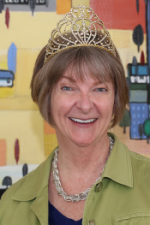
Okay, you got me—I crowned myself! Here’s the thing: I’m an introvert. When I realized that being a published author wasn’t just about writing, that it was also about connecting with my audience on a personal level, I had to figure out a way to make that work for me. And putting on a costume did it. When I don my gown and tiara, I’m no longer the one hanging back in a crowd hoping no one will notice me. I’m an actor onstage. The weird thing is that the character I’m playing is actually me. Or at least an aspect of me, one that I’d never expressed before—and one that makes an immediate connection with kids, for whom I am anything but make-believe. I am the Story Queen. (And “queen” only because it rhymes with “Jean”—I could just as easily be “Claire the Story Bear” and dress up in a furry suit, if Claire were my name!)
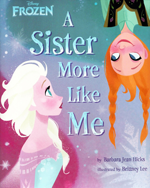
First, I had the wonderful opportunity of seeing an early screening of Frozen, more than a year before the movie was released. It was still in production—no music, not completely animated, pieces of the story not yet fleshed out—but still, I think everyone in the audience knew it was going to be something special.
I also enjoyed the story-building process—thinking about my own two sisters and me, and how we didn’t always understand each other because we were so different from one another. And I thought about how we sometimes depended on one another because of those very differences.
I lost my eldest sister the day before Frozen was released in theaters. I’m sad she never got to see the movie, but glad she was able to hold the finished product in her hands before she died. The book is even more special to me because I associate it with Lindy. The last weekend we spent together, she had arranged for me to read and do a book signing for A Sister More Like Me at her favorite bookstore in Seattle, and many of her friends as well as her daughters, granddaughters and great-granddaughters were there. I have a picture of the two of us at the signing, me decked out in my royal finery, Lindy standing behind me with her hand at my back—a visual metaphor. Even now I feel she stands behind me, supports me, encourages me.

A number of years ago I joined a children’s book writers’ group and met Kevin Wood—a man who is off-the-charts, in my opinion, when it comes to creativity. One day he brought a grocery list to the meeting–of items you might find in a fairytale grocery store, like poison apples, magic beans and pumpkins that turn into carriages. It was written in rhyme. He basically asked me if I could help him come up with characters and a plot to be used as a delivery system for his grocery list!
The Fairytale Grocery Store gained characters and a plot in a Little Red/Wolf rematch, with cameo appearances by the Three Pigs and other various fairytale folk. We had a publisher interested at one point, but it didn’t go anywhere. I continued to work on the story off and on; I’m a dog with a bone when it comes to a good story—if I think it has potential, I just don’t give up on it. Somewhere during that time, the title became Once Upon a Parsnip and parsnips were added to the plot.
Fast forward a dozen years…. I was doing a promotion for A Sister More Like Me at our local movie theatre the weekend Frozen was released. Ben Mann introduced himself as a local artist; we had a lovely chat and later developed a friendship. Meanwhile, I had met a group of “author-entrepreneurs,” women who had all published books independently, and I felt an immediate affinity with them. (I call them my “tribe”!) I had several manuscripts out to agents and editors but was getting no response, so I asked Ben if he might be interested in illustrating a book and self-publishing it with me. The timing was right. It was something he had wanted to do, and he felt our partnership and the manuscript were both a good fit. We met about every two weeks over the next six months, and I gave him feedback based on the things I’d learned paying attention to the editors and art directors on my previous books.
Six months after Ben finished the illustrations, we had Once Upon a Parsnip in hand. It was very exciting to open that first box of books! I had published a total of 20 books through traditional publishers, but this one felt different. For one thing, I loved acting as art director for the project. I pretty much let Ben do what he wanted to with the art, but I had a few suggestions about the relationship between the text and the illustrations in places, and he took them to heart. Later, I worked with the graphic designer at our publisher, Mascot Books, until we achieved the vision I had in my mind. I saw the art direction as another expression of my creativity, and I am so, so pleased with the look, color and movement of the text on the page and how it integrates with the artwork.
I also learned that I love the collaborative process. I have been fortunate to have had several amazing artists assigned to my previous books, but I wasn’t lucky enough to have actually worked with any of them. It was such a pleasure working with Kevin on the manuscript, with Ben on the illustrations and with the staff at Mascot Books on the editing and graphic design. I was very pleased when Kevin, who teaches English Language Learners in an elementary school, wrote a short easy reader about our three-way collaboration. Parsnip Partnership is designed for teachers to use in the classroom alongside Once Upon a Parsnip. Kevin has graciously given permission to other teachers (and parents!) to download and print this unique teaching guide.
And if you could be any fairytale character, who would you be? Why?
I’d like to be a fairy-godmother-at-large. Wouldn’t it be great to be able to right the wrongs of the world with the wave of a magic wand? I know what I’d do—I’d use my magic to make sure that every child everywhere had a chance to be a child–to laugh, to play, to imagine, to see light and beauty in the world. To feel safe. To be loved without reservation. In the meantime, I do what I can sans magic.
What’s the Difference?
The Pop-Up Adventure Play Days at the Maple Neighborhood Center over the summer months have been great fun. Kids of all ages have been able to engage in ‘good, old-fashioned’ play activities like digging holes, painting walls and building cardboard forts.
As we move toward establishing an ongoing Adventure Playground at Maple, we have been adding more challenging activities. Saws, hammers and nails are now more prominent. A ladder has been added to a tall tree to facilitate climbing. Kids have been signed in and dropped off by parents. All these activities are laying the ground work for us to open the Sacramento Adventure Playground for regular operation on Tuesday, August 23.

The closer we get to the opening day, the more we hear the question, “What’s the difference between the Pop-Up Adventure Play Days and the on-going Adventure Playground?”
The major difference is the age of the participants. The Adventure Playground at Maple is developed to serve children and youth ages 7 to 15 rather than children of all ages and their families. This is a big shift for Fairytale Town as we have always served young children (from birth to age 10) and their families. We are excited about the opportunity to offer playful and creative experiences for youth. The types of play at the Playground will suit older children and youth as they will involve a little more risk and creativity, and a lot less adult involvement.
Another significant difference is the introduction of tools and building supplies. Saws, hammers, nails, screwdrivers, sewing machines and such will be available for participants to use. Play workers will be on hand to make sure the participants learn how to properly use and care for the tools, but the kids will be able to create and build things they can call their own.
There are other minor differences as well…
- The Adventure Playground will be open during afterschool and weekend hours. Operating hours will be 2:30-6:30 PM Tuesdays, Wednesdays and Thursdays, and Saturdays from 11 AM to 3 PM.
- Once registered by a parent or guardian, children and youth can come and go from the Adventure Playground on their own. Parents and guardians may visit the Playground, but for observation only. They are encouraged to let their children pursue activities on their own.
- Participants can create—and destroy—things over time, rather than in a one-day time-frame.
And, of course, much is the same…
- The Adventure Playground will be free to those who register.
- Participants will get messy and are encouraged to wear clothes and shoes that can get dirty. (In fact, closed-toe shoes are required.)
- The Playground will continue to hold regular Pop-Up Days for the community—at both Maple Neighborhood Center and other locations around town!
Around the world, Adventure Playgrounds tend to become places the participants call their own; and we hope the Sacramento Adventure Playground at Maple does as well.
Learn more about the Sacramento Adventure Playground at the Playground’s website.
Pop-Up Adventures
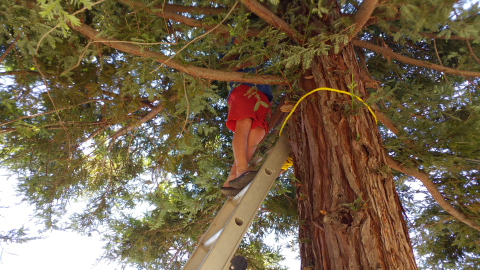
These kinds of ‘risky’ play experiences have been disappearing from childhood over the past few decades. It’s understandable that we as a society want to protect our children, but we do so at our own risk. Risky play challenges children. It allows them to stretch their boundaries as they explore their world. In the case of the tree climber, it even gives them a different perspective from which to view the world. Risky play also allows children to gain a sense of their own abilities, learn to assess risk, test their skills, and experiment with more complex and difficult tasks. Or, as the girl on the ladder might say, it helped her climb higher that she ever had before.
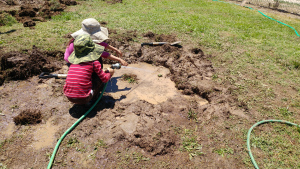
We have been hosting Pop-Up Adventure Play Days sat the site to build momentum for the permanent Adventure Playground, adding a little more risk each time. Tree climbing and hammers and nails were added to our existing activities of mud play, fort building, and wall painting. Additional Pop-Up Play Days are set for July 23 and August 20. The permanent Adventure Playground will open August 23.

Playful Learning
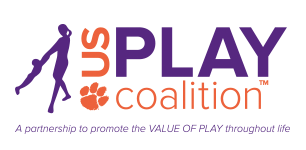
The conference kept us busy from 8am to 10pm. Each day I was able to meet and learn from a wide array of inspiring people and their programs: a zoo employee who developed a nature club for zoo members, a children’s museum worker who is introducing play work to her children’s theater staff members, a researcher who provided facts and figures for play advocacy efforts, a naturalist who began a new nature play initiative at his nonprofit, an architect who studied playgrounds and developed best practice standards and another who established an adventure playground, play workers who shared their insights on play forensics and play cycles, educators who developed free-play after-school programs and tinkering labs, and marketers who demonstrated the power of play in telling stories.
I also got to hear some inspiring Keynote Speakers. Peter Gray, a research professor of psychology at Boston College—and the Keynote Speaker at last year’s Sacramento Play Summit—spoke to us about the dramatic decrease in children’s play over the past few decades, and, perhaps not surprisingly, the increase of depression, anxiety and narcissism in children. I was thrilled to get a preview of one of the Keynote speakers for this year’s Play Summit, Lenore Skenazy. Skenazy is the author and founder of the book/blog/movement, Free Range Kids. She shared stories about the backlash she received for allowing her nine-year-old son to take a subway home alone—at his request. She shared her insights on why we’ve become so crazy about letting our children out of our sight and her Free Range Kids Bill of Rights, which simply states that children have the right for unsupervised time—and parents have the right to give it to them. Those who attend this year’s Play Summit are in for a treat—she is a very entertaining, thoughtful and dynamic speaker!
- Psychologist Peter Gray
- Author and Speaker Lenore Skenazy
Other Keynote addresses featured Rue Mapp, the founder of Outdoor Afro, a social community that reconnects African Americans to the great outdoors, Jean Margaret Smith of Nickelodeon whose World Wide Day of Play is September 17, and Justin Bogardus, who created the YouTube hit NatureRX. (Check it out—it’s hysterical.)
There were some common themes that were explored across all disciplines. The decrease in recess time for elementary school children—particularly those in high poverty areas, the increase in adult oversight for children’s activities, decreased time in natural settings, and the need to inform and educate decision and policy makers on how important play is for all mankind—especially children. There were also expressions of hope. There are lots of Adventure Playgrounds opening in the United States. Research bears out what we think is true—that children who have ample time to play do better in school and life in general. There seemed to be a general sense that the play movement was gaining momentum, and the variety of programs and initiatives that are being explored and implemented across the country reinforced this view.
As I reflect on the conference, I come back, literally and figuratively, to Fairytale Town. While we can’t meet all of the play needs in our community, the playful opportunities we provide children, their families, and our community are essential. The fact that we provide these opportunities for children of a wide age range, multiple generations, and schools and community centers as well as family units is a key strength of ours. The fact that we are part of a growing movement that encourages play will only make us stronger.








